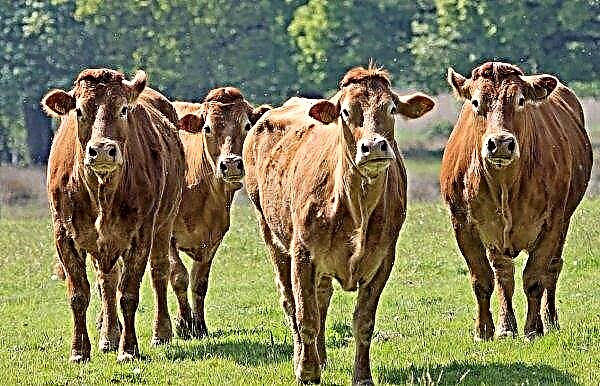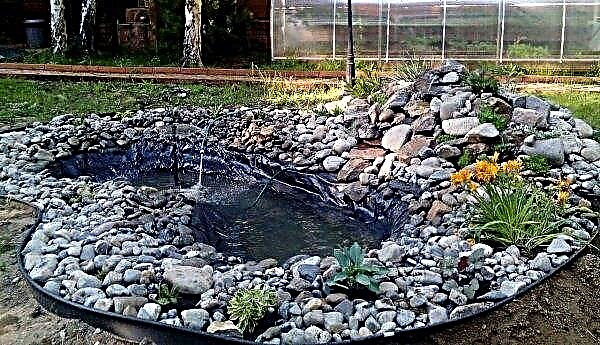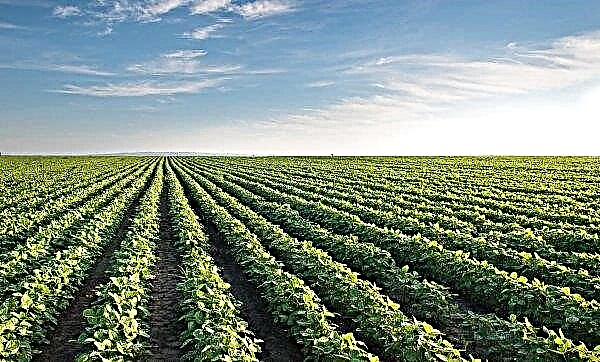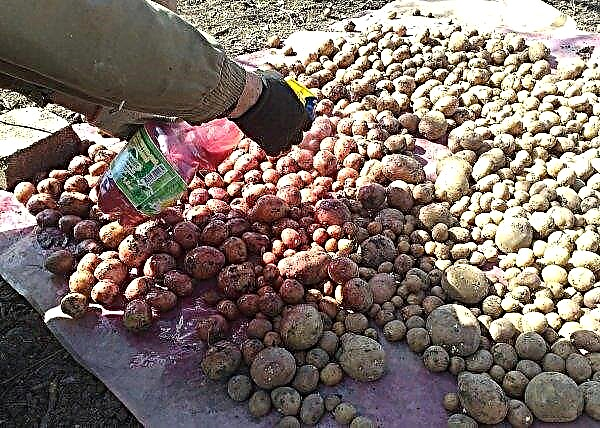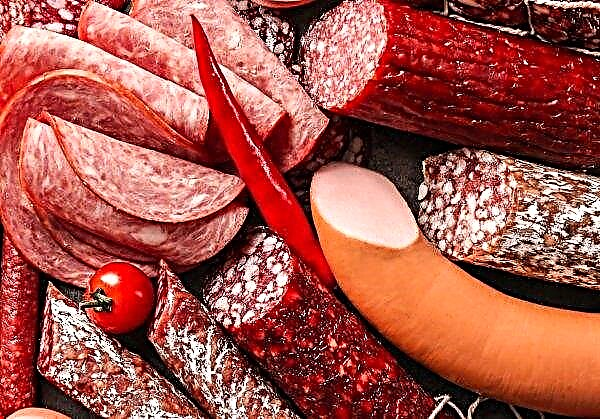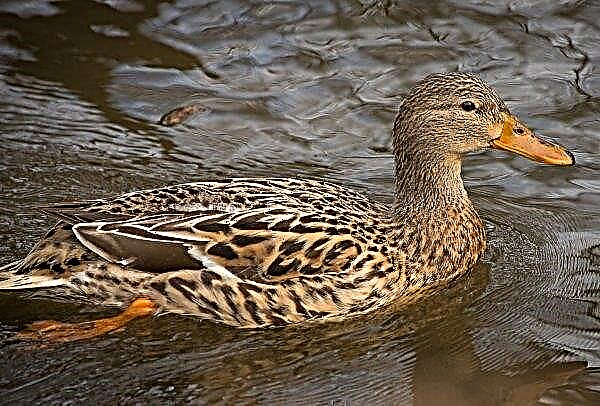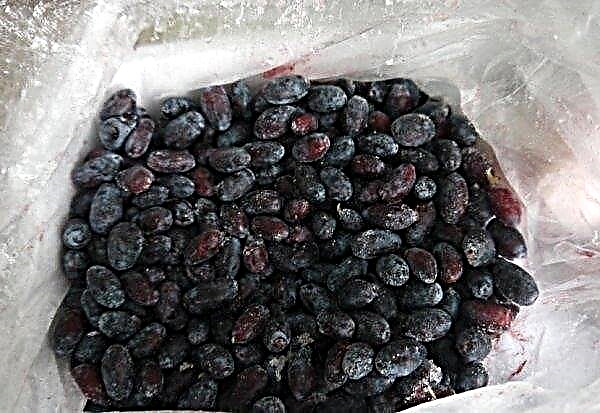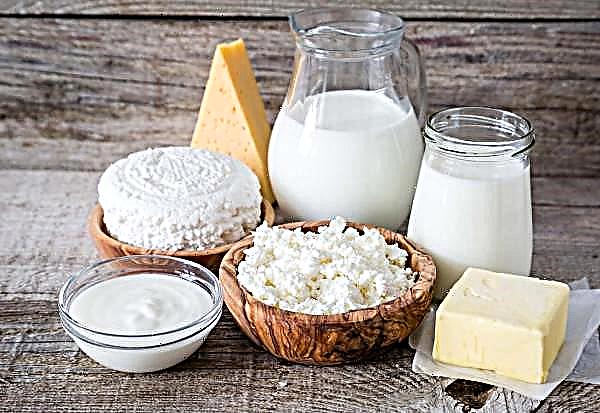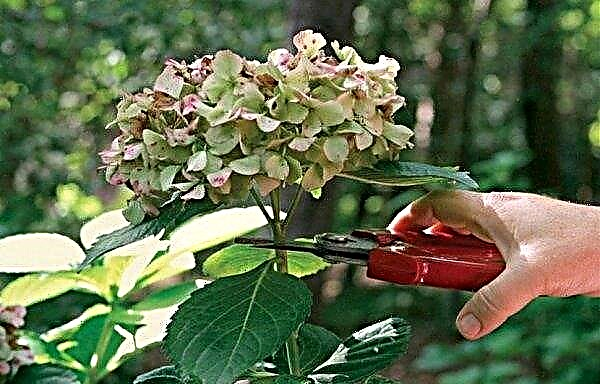German Alvar potatoes - the variety is not new, but reliable and proven. Over the years, he has earned a reputation as the best red potato in Europe. This article will introduce you to this variety in detail.
Selection history
Alvar potatoes were bred in 1985 by the German company Saatzucht Fritz Lange KG, which has been breeding seed potatoes for a long time. The Lange brothers worked on the selection of this variety. They wanted to create a mid-early potato variety whose characteristics would be superior to its predecessors.
Did you know? Potato is from South America. In 1580, the vegetable was brought to Europe, and it came to North America 40 years later, although it is closer geographically.
After 10 years of painstaking work, they received a tuber that passed all the tests and meets all the requirements: productive, unpretentious to the soil, resistant to drought and disease, high-quality root crops with excellent taste. In 1999, Alvara was included in the State Register of Russia with permission to cultivate in the Northwest and North Caucasus regions. But it is actively grown almost throughout the country, as well as in Ukraine and Belarus.
Botanical Description
Alvara belongs to the best varieties not only in terms of yield, but also in appearance and taste. Perhaps its bushes are not very different from other varieties, but root crops are very recognizable.
Root crops
In one nest you can find 8-14 beautiful aligned potatoes.
Tuber Characteristic:
- oval, elongated shape;
- weight - 90–110 g;
- peel color - red-pink;
- the surface is smooth, the eyes are small, small and shallow;
- the pulp is light yellow or cream in a section, when cleaning and heat treatment does not darken, the ability to digest is average;
- starch content - 12.8-14.1%;
- universal application, used in industry for the manufacture of chips and convenience foods;
- taste rating - 4.8 (on a 5-point system).

Description of Tops
Alvara bushes grow tall - up to 80 cm. The stems are upright and semi-upright, intermediate type. The foliage is thick, green. The leaves are medium-sized with slightly wavy edges, the surface is smooth. During flowering, each bush forms several inflorescences of small purple flowers.
Did you know? In 1995, astronauts grew the first vegetable on board the spacecraft. It was a potato.
Grade characteristics
- In addition to the beautiful appearance of the tubers and their good taste, Alvara has other advantages. For instance:
- precocity
- high yields;
- undemanding to the soil;
- resistance to drought;
- resistance to most diseases;
- excellent marketability and durability.
Another significant advantage of the variety is its slow degeneracy. This means that you can grow Alvara on your plot for several years in a row, independently harvesting seed potatoes, and this will not at all worsen the quality and quantity of the crop. It will be necessary to renew the seeds only after 5 years.
Grade stability
Alvar potatoes have strong immunity. He does not suffer from most of the potato diseases that other varieties are susceptible to: scab, cancer, golden potato nematodes, alternariosis and rhizoctoriosis. To late blight of the green part of the bush, the average resistance. That is, potatoes can get this fungal disease, but only if the weather is damp and in the absence of proper care.
Ripening time
Alvara belongs to the varieties of medium early ripening. Harvested 70–90 days after emergence, which depends on weather conditions in the region. During this time, root crops have time to fully form and accumulate enough starch and other useful substances.
Productivity
The variety is very productive, for which they love it. Under one bush, up to 14 large potatoes are usually formed. So, from 2 bushes you can collect almost a bucket of delicious root crops, and from 1 hundred parts - up to 500 kg of the crop. On an industrial scale, from 1 hectare harvested in the range of 295-440 kg of Alvar potatoes.
Keeping grade
Of the total harvest, almost 90% of tubers have a beautiful presentation. And since Alvar potatoes are able to be stored for a long time, 90% of selected potatoes will remain in storage until spring, without losing any taste or marketability. Observance of the correct storage conditions will help to preserve the tubers without rotting and sprouting even until a new crop.
Rules for planting potatoes in open ground
Although Alvara is an overseas potato, growing it in our area is not at all difficult. He responds well to standard agricultural techniques. There are several methods for planting potatoes, but the most popular is traditional (in separate holes).
Optimal time for landing
In open ground, potatoes are planted in different regions at different times, mainly in April or May. The main condition is that the temperature of the soil at a depth of 10 cm should not be lower than 8 ° C. To this temperature, the soil warms up if for several days the average daily air temperature does not fall below + 10 ° С. This is the most comfortable temperature for germination and rooting of potato seeds. In cold soil, tubers can become ill. Moreover, at this temperature, the soil becomes ripe, that is, not wet, not dry, but moderately moist. If the earth in your hands is molded into a lump, but then quickly crumbles, then this is a sign of moderate humidity.
In cold soil, tubers can become ill. Moreover, at this temperature, the soil becomes ripe, that is, not wet, not dry, but moderately moist. If the earth in your hands is molded into a lump, but then quickly crumbles, then this is a sign of moderate humidity.
Site selection and soil preparation
One of the significant advantages of Alvar potatoes is its low soil requirements. It is guaranteed to yield crops on almost any type of soil: chernozem, loam, sandy loam, podzolic, sod-podzolic, peat-gel, etc. Of course, the variety shows the best results on fertile, light and slightly acidic soil.
Like other solanaceae, Alvara is a sun-loving plant, so for its planting you need to choose a site well lit by the sun, without a shadow. But it is desirable that it be protected from cold winds and drafts, possibly by planting bushes. The preparation of this site should be engaged in the fall.
It includes:
- deep plowing or digging a shovel on a bayonet (about 25 cm);
- harvesting weeds with roots;
- the introduction of organic matter (humus), it is possible with the addition of mineral phosphorus-potassium fertilizers.
 Instead of fertilizers, you can sow the site with siderates. In autumn, they are plowed into the ground, so that it is enriched with nitrogen and other nutrients. In addition, “green manure” inhibits the growth of weeds, prevents the development of infections and promotes aeration of the soil.
Instead of fertilizers, you can sow the site with siderates. In autumn, they are plowed into the ground, so that it is enriched with nitrogen and other nutrients. In addition, “green manure” inhibits the growth of weeds, prevents the development of infections and promotes aeration of the soil.Good and bad predecessors for potatoes
Maintaining crop rotation is important for the health and normal development of plants. If you plant potatoes after crops that are prone to the same diseases and pests, healthy sprouts and a good harvest can not be expected.
Therefore, the worst precursors for Alvara are all types of solanaceous: potatoes, tomatoes, eggplant and pepper. Repeatedly in one place potatoes can be grown only after 3-4 years. It is advisable to plant it after cereal, legumes and other siderates, as well as cabbage, cucumbers, zucchini, garlic and onions.
Preparing tubers before planting
The preparation of seed potatoes begins in the fall with selection. For planting, you need to choose not the small or medium tubers, but the best specimens: smooth, healthy, large, of the correct shape and color, without flaws and damage. Only from such seeds will a good crop grow. Store seed in a cool place where it does not germinate. In spring, the seeds should be germinated. To do this, 2-3 weeks before planting (in early April), boxes with root crops must be taken out to a warm place. Germination temperature - + 15 ... + 20 ° С. The warmer the room, the faster the germs hatch. Tuber germination accelerates vegetation and crop formation. In non-germinated seeds, the whole process slows down, and harvesting is shifted by about a month.
In spring, the seeds should be germinated. To do this, 2-3 weeks before planting (in early April), boxes with root crops must be taken out to a warm place. Germination temperature - + 15 ... + 20 ° С. The warmer the room, the faster the germs hatch. Tuber germination accelerates vegetation and crop formation. In non-germinated seeds, the whole process slows down, and harvesting is shifted by about a month.
Important! Do not germinate the tubers for a very long time so that the hatching sprouts do not grow long. Sufficient sprout length - from 5 mm to 2–3 cm
Although large potatoes have been selected for planting, they are not advised to plant them whole. Experts recommend cutting each instance into several segments so that each piece has at least one sprouted eye. The last stage of the preparatory work is the treatment of seeds with fungicides and insecticides. You can use the drugs "Fitosporin" (protection against late blight) and "Prestige" (insecticide and growth stimulant).
Scheme and depth of landing
Optimal landing pattern:
- 35–40 cm between tubers;
- 60–70 cm between rows.
Such distances are observed both when landing in individual holes, and in furrows. With this scheme, each bush receives enough space for nutrition and growth of tubers. Also, each plant will be well lit by the sun and ventilated. In such conditions, the potato will grow healthy, it is unlikely to get sick and will be "too tough" for pests. Do not dig the potatoes deep. It is enough to sprinkle a little earth. The scheme of planting potatoes. After all, during the growing season, the bushes will be spudded several times. The optimal planting depth is 5–6 cm. On whether fertilizer should be poured into the holes and what, the opinion of gardeners diverges. Some believe that this is not necessary if the land was fertilized in the fall. Others prefer mineral fertilizers containing nitrogen, phosphorus and potassium (a pinch per hole). Still others are more inclined to biofertilizers, such as wood ash or Bokashi with compost.
The scheme of planting potatoes. After all, during the growing season, the bushes will be spudded several times. The optimal planting depth is 5–6 cm. On whether fertilizer should be poured into the holes and what, the opinion of gardeners diverges. Some believe that this is not necessary if the land was fertilized in the fall. Others prefer mineral fertilizers containing nitrogen, phosphorus and potassium (a pinch per hole). Still others are more inclined to biofertilizers, such as wood ash or Bokashi with compost.
How to care for potatoes
Alvara care is standard. It includes watering, top dressing, cultivation, weeding, hilling and preventive treatment.
Irrigation mode
Alvara potatoes are resistant to drought. He does not need frequent watering, it is enough to do this several times a season, in the southern regions - more often. A signal for irrigation is the drying of the soil by 6-8 cm. In wet weather, you do not need to water. Although Alvara is rarely watered, it is plentiful. In hot summers, you may need half a bucket of water for each adult bush. It is very important that the plants become moist during flowering and the formation of tubers.
Although Alvara is rarely watered, it is plentiful. In hot summers, you may need half a bucket of water for each adult bush. It is very important that the plants become moist during flowering and the formation of tubers.
Top dressing
Potatoes growing on fertile soil and fertilized during planting do not need further fertilizing.
But if there is a need, you can feed him during the growing season:
- during the growth of greenery - nitrogen mineral fertilizer (urea solution) or organic (solution of mullein or chicken droppings);
- during budding, before flowering - phosphorus-potassium fertilizer (superphosphate with potassium sulfate and wood ash).
Next, you can apply foliar top dressing by spraying the bushes:
- after flowering begins - a solution of ammonium nitrate, superphosphate and potassium chloride;
- during the growth of root crops - special fertilizer "Mag-Bor" containing magnesium and boron, which improve the taste and density of tubers.

Weeding and loosening the soil
The first loosening of the soil must be carried out before the emergence of seedlings, about a week after planting. This measure will provide air access to the planted seeds. Loosen the earth with the simultaneous removal of germinating weeds can be a rake or harrow.
Subsequently, these operations are carried out the day after each watering and rain. Do not forget about hilling. The first time plants of 15–20-centimeter height are swollen, and again after 2 weeks. But in the southern regions, where there is little moisture in the ground, there is no need to hive bushes.
Preventive treatment for diseases and pests
Alvara potatoes have strong immunity. Of all potato diseases, only late blight is susceptible.
Prevention of the disease are the following steps:
- crop rotation compliance;
- planting only germinated seeds;
- special treatment before planting;
- observing the correct planting scheme so that the bushes are well ventilated and illuminated;
- in humid weather favorable for late blight, prophylactic spraying with fungicides (copper chloride, Modex, Azocene 5%, Polycarbacin 80%, Arceride 60%).
The most dangerous pest is the Colorado potato beetle. Old and young individuals can destroy a potato planting in a few days. A preventative measure is the treatment of tubers before planting. And you can deal with the bugs that have already appeared by spraying the bushes immediately after hatching larvae. Used insecticides: "Prestige", "Actara", "Regent", "Corado".
Important! The last chemical spray should be done no later than 20 days before harvesting.
Harvesting and storage
Potatoes are harvested in late August - early September. By this time, the tops usually lie down and dry. If the stems are still green, they must be mowed 2 weeks before harvesting. This will accelerate the ripening of root crops and the roughening of the skin. Digging potatoes of this variety is quite convenient, since the tubers in the nests are compact. Harvested must be dried in air for several hours. Then root crops need to be sorted into large, small, damaged and sowing. First of all, damaged potatoes will need to be used, then small ones. Sorted potatoes are put in boxes and put into the cellar. The storage should have a temperature of + 2 ... + 4 ° C and a humidity of 90–92%.
Then root crops need to be sorted into large, small, damaged and sowing. First of all, damaged potatoes will need to be used, then small ones. Sorted potatoes are put in boxes and put into the cellar. The storage should have a temperature of + 2 ... + 4 ° C and a humidity of 90–92%.
In such conditions, the tubers can even lie until the new crop, remaining beautiful and tasty. Many gardeners have been growing Alvar potatoes on their plots for many years. They prefer it to other grades for its unpretentiousness, stability and good taste.

